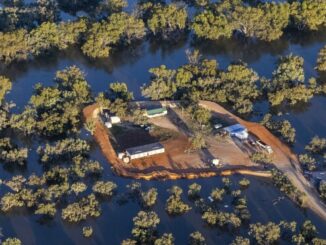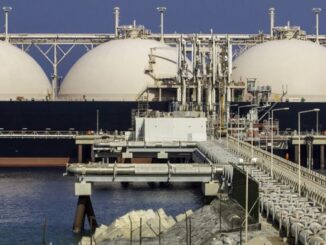
- Oilfield services companies are ramping up activity in low-carbon energy.
- Service companies focused on equipment and technology naturally benefit from new businesses earlier in the cycle.
- Current revenues from new energy businesses for the top oilfield firms are already in the hundreds of millions of dollars.
The biggest oilfield services providers are looking to take advantage of the soaring investments in clean energy to generate revenues from the energy transition and prepare for whenever oil demand peaks.
Current revenues from new energy businesses for the top oilfield firms are in the hundreds of millions of dollars. Companies expect those revenues to jump to single-digit billions by the end of the decade.
The subsurface, offshore drilling, and digital technology expertise of the oilfield services industry will help it in project executions in the clean energy business, analysts say.
As clean energy investment is already exceeding the money spent on fossil fuels, revenues for the early movers with expertise to deliver on new energy projects will also rise.
The big three oilfield services firms – SLB, Baker Hughes, and Halliburton – already have New Energy divisions working on geothermal, hydrogen, carbon capture and storage (CCS), and direct air capture technologies and projects.
Service companies focused on equipment and technology naturally benefit from new businesses earlier in the cycle, Jeff Tillery, a partner at energy-focused consulting firm Veriten, told The Wall Street Journal.
The companies are not abandoning oil and gas, expecting increased exploration and a multi-year growth cycle amid energy security concerns, but they say the new energy business could grow to make up between 5% and 20% of all revenues by 2030.
Baker Hughes, for example, booked almost $300 million of New Energy orders in the first quarter of 2023, CEO Lorenzo Simonelli said on the earnings call. New energy is expected to account for around 10% of Baker Hughes’s gas technology orders within four years. By the end of this decade, the firm expects new energy orders could be in the range of $6 billion to $7 billion, Simonelli said. This would be around 20% of all revenues in 2030.
Investment in new energies will be a driving factor for the current upcycle for the oilfield services firms, alongside financially strong operators focused on returns, the executive said, noting that the “current environment remains unique with a spending cycle that is more durable and less sensitive to commodity price swings relative to prior cycles.”
For SLB, the new energy business was behind last year’s rebranding from Schlumberger to reflect its transformation from an oilfield services provider to a global technology company helping the energy transition.
Weeks after announcing the rebranding, SLB’s chief executive Olivier Le Peuch said at an investor day presentation that the world’s top oilfield services provider plans to rapidly grow its New Energy business to deliver more than $3 billion of revenue by the end of the decade. SLB is investing in a diverse portfolio of new energy businesses, aiming to make this business its biggest division in the future, Le Peuch added.
SLB is making progress with new CCS activities that raised its involvement to around 30 projects globally. More CCS projects are expected to move forward to final investment decisions in the next 2 years, with the tailwinds from the U.S. Inflation Reduction Act and other initiatives around the world, the executive said on the Q1 earnings call in April.
SLB is working to accelerate the industrialization and scale-up of its proprietary non-aqueous solvent (NAS) technology, which enhances the efficiency of absorption-based carbon capture. In October, the company and Linde entered into a strategic collaboration on CCUS projects to accelerate decarbonization solutions across industrial and energy sectors.
The oilfield services giant is also collaborating with Oman in building a national strategy to develop the potential of geothermal resources in the Middle Eastern country.
Halliburton, the top fracking services provider, is also active in the CCS sector in the evaluation of safe and efficient CCS subsurface storage projects.
Baker Hughes is exploring potential opportunities for the scale-up and adoption of novel technology solutions for green hydrogen, green ammonia, and geothermal projects. It also signed this year an agreement with eFuels company HIF Global to collaborate in direct air capture (DAC). The companies plan to test Baker Hughes’ Mosaic DAC technology pilot units to accelerate DAC deployment at a commercial scale.



